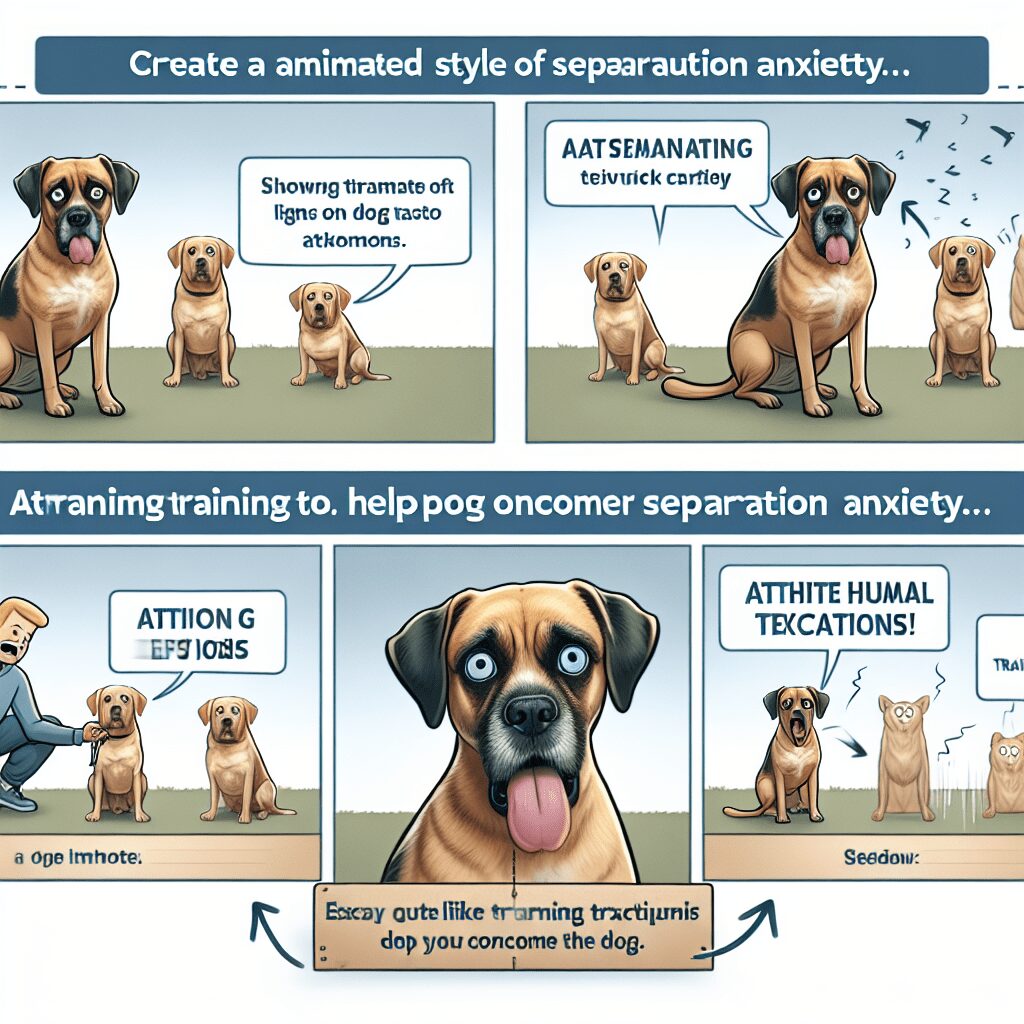Calm the Canine: Effective Training Techniques to Ease Your Dog’s Separation Anxiety
As lovers of our four-legged friends, we all want them to be happy and healthy, both physically and mentally. One of the most challenging issues many dog owners face is separation anxiety. If your pup becomes distressed when you’re not around, you’re not alone. Separation anxiety can affect any dog, regardless of age or breed. Understanding your dog’s needs and implementing effective training techniques can go a long way in easing their anxiety and improving their overall well-being. In this blog post, we will explore practical, positive methods to help calm your canine companion.
Chapter 1: Understanding Separation Anxiety in Dogs
Before we dive into the solutions, it’s essential to understand what separation anxiety is.
-
What Is Separation Anxiety?
Separation anxiety in dogs is a condition where a dog experiences distress when separated from their owner or primary caregiver. This can manifest in various ways, including excessive barking, chewing, digging, or even self-harm in extreme cases.
-
Signs of Separation Anxiety
Look out for common signs that your dog may be dealing with anxiety. These can include:
- Constant whining or barking when left alone.
- Destructive behavior such as chewing furniture or scratching doors.
- Accidents in the house, even if they are potty trained.
- Pacing or restlessness when you start to prepare to leave.
Understanding these signs can help you address the anxiety before it escalates.
Chapter 2: The Importance of Routine
Dogs thrive on routine—it gives them a sense of security. Having a consistent daily schedule can significantly help ease your dog’s anxiety.
-
Set a Daily Schedule
Try to establish a regular feeding and bathroom schedule. Take your dog for walks at the same time each day, and dedicate certain periods for play and training.
-
Practice Departures and Arrivals
To help your dog adjust to your comings and goings, practice short departures. Leave for just a few minutes and then gradually extend the time you are gone. Always try to remain calm and nonchalant when leaving and returning home to avoid making a big deal out of it.
Chapter 3: Creating a Safe Space
Your dog should feel safe and secure in your home, especially when you’re away.
-
Designate a Comfort Zone
Create a cozy area where your dog can snuggle up with their favorite blanket and toys. This can be a specific room or a crate that they associate with safety and comfort.
-
Use Calming Aids
Consider using calming products such as anxiety wraps, pheromone diffusers, or relaxing music designed for dogs. These can create an environment conducive to relaxation and help reduce anxiety levels.
Chapter 4: Desensitization Techniques
Desensitization is a training technique that can significantly diminish your dog’s negative response to being alone.
-
Counter-Conditioning
Every time you leave, provide your dog with a special treat or toys they only receive during your absences. This helps them associate your departures with something positive.
-
Gradual Exposure
Start with leaving your home for just a few seconds and gradually increase your time away as your dog becomes comfortable. Over time, your goal is to build up to longer durations without distress.
Chapter 5: Training Commands to Ease Anxiety
Teaching your dog commands can enhance their confidence and overall behavior during times of separation.
-
Basic Commands
Focus on basic commands like "sit," "stay," and "leave it." Training sessions should be fun and filled with treats to keep your dog engaged.
-
“Place” Command
Teaching your dog the "place" command can help. This skill instructs them to go to a designated area for relaxation. Having a quiet place to retreat can be beneficial during anxious moments.
Chapter 6: Enrichment and Mental Stimulation
A tired dog is a happy dog! Engaging your dog’s mind can lessen anxiety.
-
Interactive Toys
Invest in puzzle toys or treat-dispensing toys that keep your dog mentally stimulated while you’re away. These can provide valuable distractions and make your short separations easier for them.
-
Regular Exercise
Make sure your dog receives plenty of physical exercise. Daily walks, play sessions, and even doggy playdates can help burn off excess energy and keep them calm.
Chapter 7: Seeking Professional Help
If you find that your dog’s separation anxiety is severe, it may be time to seek professional assistance.
-
Consulting a Trainer or Behaviorist
Professional dog trainers and behaviorists are equipped with the skills to help your dog if your efforts at home haven’t resolved their anxiety. Working together can create a tailored plan to meet the unique needs of your dog.
-
Veterinarian Guidance
Sometimes, a discussion with your veterinarian is necessary. They might recommend specific training tools or even medications if the separation anxiety is particularly challenging.
Chapter 8: Patience and Positivity
Above all, remember that change takes time.
-
Celebrate Small Victories
Every little progress counts! Celebrate your dog’s milestones, no matter how small, and maintain a positive attitude. Your energy and attitude will greatly influence how your dog copes with anxiety.
-
Consistency Is Key
Practice the techniques you’ve learned consistently. Relying on a combination of your training and your dog’s comfort will lead to success in overcoming their anxiety.
Conclusion
Separation anxiety in dogs is a common but manageable issue. By understanding your dog’s feelings, creating a supportive environment, and employing effective training techniques, you can help your furry friend feel more secure when you’re not around. With patience, consistency, and a lot of love, your dog can overcome their anxiety, leading to a happier and healthier life together.
FAQs
Q: Can all dogs develop separation anxiety?
A: Yes, separation anxiety can affect dogs of all ages, breeds, and sizes. Some may be more prone due to their past experiences or temperament.
Q: How long does it take to train a dog with separation anxiety?
A: The duration varies for each dog. Some may show improvement within a few weeks, while others may need several months. Consistency is crucial.
Q: Can medication help with my dog’s separation anxiety?
A: Consult with your veterinarian. In some cases, medication combined with training can be an effective solution.
Q: Should I leave my dog with another person or pet when I leave?
A: It can help, but it’s essential that your dog feels comfortable with the other person or pet. Gradually introducing them to being alone might still be necessary.
Q: Is kennel training a solution for separation anxiety?
A: If done correctly, kennel training can provide dogs with a sense of security. However, it requires careful introduction and should not be seen as a punishment.
Unlock the Secrets to a Well-Behaved Dog! 🐾 Tired of your pup’s bad habits? Discover how to transform your unruly dog into a loving companion with our FREE Dog Training Mini Course! Learn essential commands, potty training tips, and effective techniques to eliminate unwanted behaviors in just days. Don’t miss out—sign up now and start your journey to a happier, obedient dog! Join Here! (https://bit.ly/3RJak0a)
Instantly Access Your Free Children’s Books Here! (https://payhip.com/BlueCherryStore) – Disclaimer: I may earn a commission from qualifying purchases as an affiliate. Please note that I only recommend products I believe will provide value to my readers.(M)









